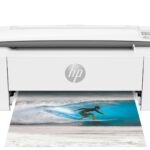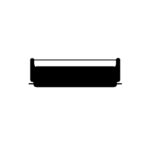Laser printers use a special part to charge the image drum. This part is called the primary charging roller. The primary charging roller applies a uniform electrical charge to the surface of the image drum. This charge is key to how laser printers work.
The charging process happens at the start of each print job. The roller puts a negative charge on the drum. This charge is spread evenly across the whole surface. It gets the drum ready for the next steps in printing.
The charged drum is then ready for the laser to create the image. The laser will write the image by removing charge in certain spots. This creates an invisible pattern that will later become visible with toner.

Primary Charging Roller: A Key Player in Laser Printing
Ever wondered how a laser printer creates those crisp, sharp images? It’s a complex process involving various components, and the primary charging roller (PCR) plays a crucial role. This often-overlooked part is essential for achieving high-quality prints. Let’s delve into the functions of a PCR.
What is a Primary Charging Roller?
The PCR is a cylindrical component typically made of a metal core coated with a conductive rubber or foam layer. It’s located within the printer’s cartridge or drum unit, positioned close to the photosensitive drum.
Functions of the PCR
- Applying a Uniform Charge: The PCR applies a uniform negative charge to the surface of the photosensitive drum. This prepares the drum to receive the image information from the laser.
- Neutralizing Residual Charge: After an image is printed, the PCR neutralizes any remaining charge on the drum. This ensures a clean slate for the next printing cycle, preventing ghosting or image artifacts.
- Preparing for the Next Cycle: The PCR conditions the drum for the next print by applying a consistent electrical charge, ensuring that toner adheres correctly to the intended areas.
Importance of a Healthy PCR
A properly functioning PCR is vital for achieving high-quality prints. A worn or damaged PCR can lead to various print defects, including:
- Backgrounding: Unwanted toner may appear on the page, creating a hazy or dirty background.
- Ghosting: Faint images from previous prints may reappear on subsequent pages.
- Streaks or Lines: Inconsistent charging can result in streaks or lines across the printed page.
- Blank Pages: In severe cases, a faulty PCR can prevent the printer from producing any image at all.
Maintaining the PCR
While the PCR itself isn’t typically user-replaceable, you can prolong its life and maintain print quality by:
- Using high-quality toner cartridges: Low-quality toner can generate excess dust and debris, which can contaminate the PCR and affect its performance.
- Keeping the printer clean: Dust and debris inside the printer can also affect the PCR. Regularly clean the printer according to the manufacturer’s instructions.
- Avoiding excessive humidity: High humidity can cause the PCR to attract moisture, which can lead to print quality issues.
Primary Charging Roller Functions
| Function | Description |
|---|---|
| Charging the drum | Applies a uniform negative charge to the photosensitive drum. |
| Neutralizing residual charge | Removes remaining charge from the drum after printing. |
| Conditioning the drum | Prepares the drum for the next print cycle. |
The primary charging roller is a critical component in laser printing. By understanding its functions and maintaining it properly, you can ensure consistent, high-quality prints from your laser printer.
Key Takeaways
- The primary charging roller applies a uniform charge to the image drum
- This charge is negative and covers the whole drum surface
- The charging step prepares the drum for image creation by the laser
Understanding Printer Components and Their Functions
Printer components work together to create clear images on paper. Each part plays a key role in the printing process.
The Image Drum and Toner Cartridges
The image drum is a key part of laser printers. It holds the image that will be printed. The drum gets a charge from another part called the primary charging roller. This charge helps the toner stick to the right spots on the drum.
Toner cartridges hold the powder used to make the print. Most color laser printers have four toner cartridges:
- Black
- Cyan
- Magenta
- Yellow
These mix to create all colors. Toner cartridges need to be replaced more often than other printer parts.
Primary Charged Roller and Transfer Charging Roller
The primary charged roller puts a charge on the image drum. This helps the toner stick to the right places. It’s a crucial step in making clear prints.
The transfer charging roller puts a charge on the paper. This pulls the toner from the drum onto the paper. It makes sure the image transfers well from the drum to the page.
Both rollers are important for good print quality. They need to work right for the printer to make clear images.
Fusing Assembly and Separation Pad
The fusing assembly melts the toner onto the paper. It uses heat and pressure to make the image last. This part can get very hot during printing.
The separation pad helps remove paper from the fuser. It stops pages from sticking together after printing. This pad wears out over time and may need to be replaced.
These parts work together to finish the print job. They turn the toner image into a lasting print on paper.
Exploring the Technical Aspects of Printer Charging Mechanics
Printer charging mechanics rely on electrical charges and precise voltage control. These processes create the foundation for high-quality printed images.
The Role of Electrical Charge in Printers
The primary charging roller is a key part of laser printers. It puts a uniform charge on the image drum. This charge is usually negative, around -600 volts. The roller spins and touches the drum surface.
This process gets the drum ready for the next step. A clean, even charge is vital for good print quality. Without it, the final image would be spotty or faded.
Voltage and Exposure: Crafting the Latent Image
After charging, the printer uses a laser to make the latent image. The laser scans across the drum. It changes the voltage in specific areas. This creates an invisible pattern on the drum.
The parts hit by the laser lose some charge. They become less negative. This voltage difference forms the image outline. Toner sticks to these areas later. The exposure process is very fast and precise.
Frequently Asked Questions
The laser printing process involves several key components and steps. The image drum plays a central role in creating and transferring printed images.
What is the sequence of steps involving the image drum during the laser printing process?
The image drum goes through charging, exposure, developing, and transfer steps. First, the primary charging roller applies a uniform charge to the drum surface. Next, a laser beam writes the image onto the drum. Toner particles then stick to the charged areas. Finally, the image transfers to paper.
How does a printer’s display interface provide status and troubleshooting information?
Printer displays show ink levels, paper jams, and error codes. Many have menu options to run print tests or clean printheads. Some advanced models offer step-by-step troubleshooting guides on their screens.
In which component does the application of the laser beam to the image drum take place?
The laser scanner assembly applies the laser beam to the image drum. It contains mirrors that direct the beam across the drum surface to create the latent image.
What mechanisms are involved if a printer is consistently feeding multiple sheets simultaneously?
Pick-up rollers, separation pads, and feed rollers work together to feed single sheets. Worn rollers or pads can cause multi-feeds. Adjusting spring tension or replacing parts often fixes the issue.
What is the role of the imaging drum in the laser printer’s charging phase?
The imaging drum receives a uniform negative charge during the charging phase. This prepares the drum surface to accept the laser-written image in the next step of the printing process.
How is the toner transferred to the image drum in a laser printer?
Toner transfers to the image drum through electrostatic attraction. The negatively charged toner particles are drawn to the positively charged areas of the drum that were exposed to the laser beam.







